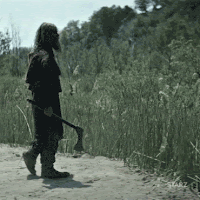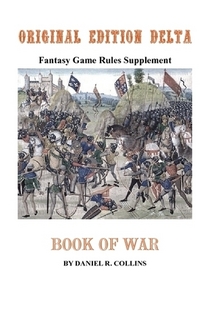Back in October, the players in my Etinerra campaign ran into an ongoing skirmish-ambush by roughly twenty Goblins. Nasty little buggers, those goblins, as they used cunning “scoot and shoot” tactics to pick away at the players. It kinda ended up looking like this:
(Take that, Tucker’s Kobolds!)
Anyway, on the campaign email list, a player kicked off a discussion of how the ambush seemed to bog things down. Not that they objected to the idea of being skirmished against, but that pausing to roll the individual rolls seemed to slow things down – who hit, who missed, what was the damage taken. It was a great discussion with some ideas like:
- Average the Armor Classes of the party and roll against that. Assign damage either randomly or somehow spread out.
- Use a d1000 (!!!) chart to figure out who hits what
This little book creates a D&D-compatible skirmish game at a 1:10 scale where 1 figure represents 10 combatants. Daniel writes Delta’s OD&D Hotspot, where he dives deep into the original version of Dungeons & Dragons, especially from a statistical perspective. It’s a great game and I’ve used it to incorporate mass combat within my D&D games, switching back and forth within the game.
So, Daniel handles combat with essentially one d6 roll versus a number based on the Armor that the target wears. So, based on that concept, I developed this rule for all future ambushes and skirmishes where many figures are opposing the party:
If it’s 3 or less, nobody gets hit.
If it’s a 4 – those at AC 7 (leather, no shield) or higher (up to AC10) get hit.
If it’s a 5 – those at AC 4 (chain/shield) or higher (up to AC10) get hit.
If it’s a 6 – those at AC 0 (plate/shield+magic/dex bonuses) or higher (up to AC10) get hit.
If there are less than 10 shooters, depending on the situation, we might go to 1:1 rolls, or I would apply penalties to the single roll for hit and for damage.
I will roll 1 die appropriate for the missile used. All those hit take that damage.
The players all approved and so off we go for the future.
Sometimes, wargame approaches work out pretty well. Simple, quick and it will get the point across that players better grab some cover or find those skirmishers ASAP!
What was really nice was having a good result based on player feedback and input. I think most of you probably already do that, but if you’re just starting out, it’s always good to encourage feedback and show that the feedback matters. I didn’t end up using the suggestions as presented, but they nudged me towards a great solution that was already there.
If you’re interested in how I mix normal 1-on-1 D&D with mass combat, here’s a blog post about it:
https://chgowiz-games.blogspot.com/2015/12/my-holy-grail-found-mixing-mass-combat.html
Here’s the rules I wrote for Book of War on how to put PCs into a mass combat:
Book of War Supplement: The Fellowship.




Holy crap! What's that first image from? The arrow pin-cushion?
I'm not entirely sure but I believe it is from the American Gods series that just came out. It's a crazy GIF!